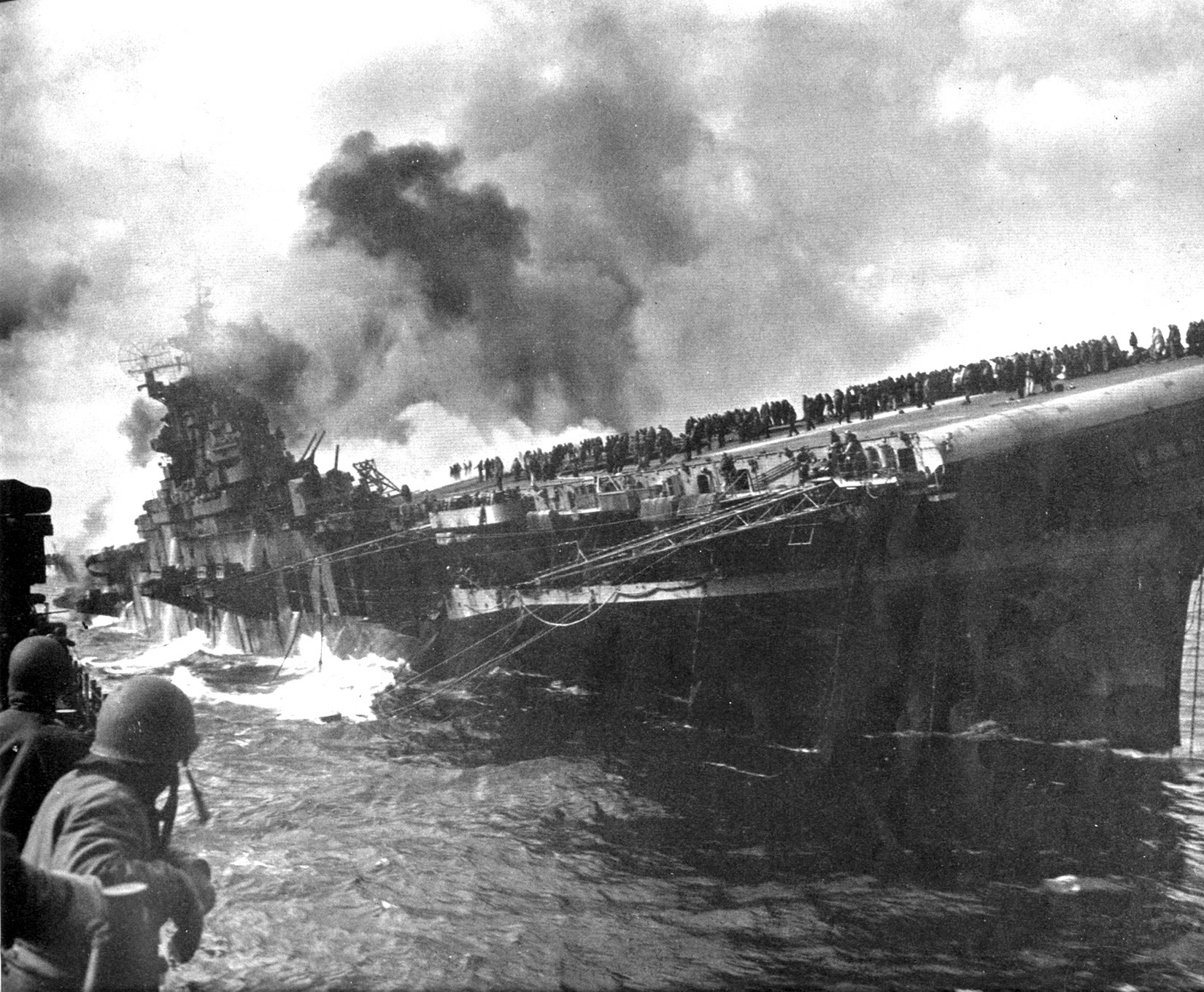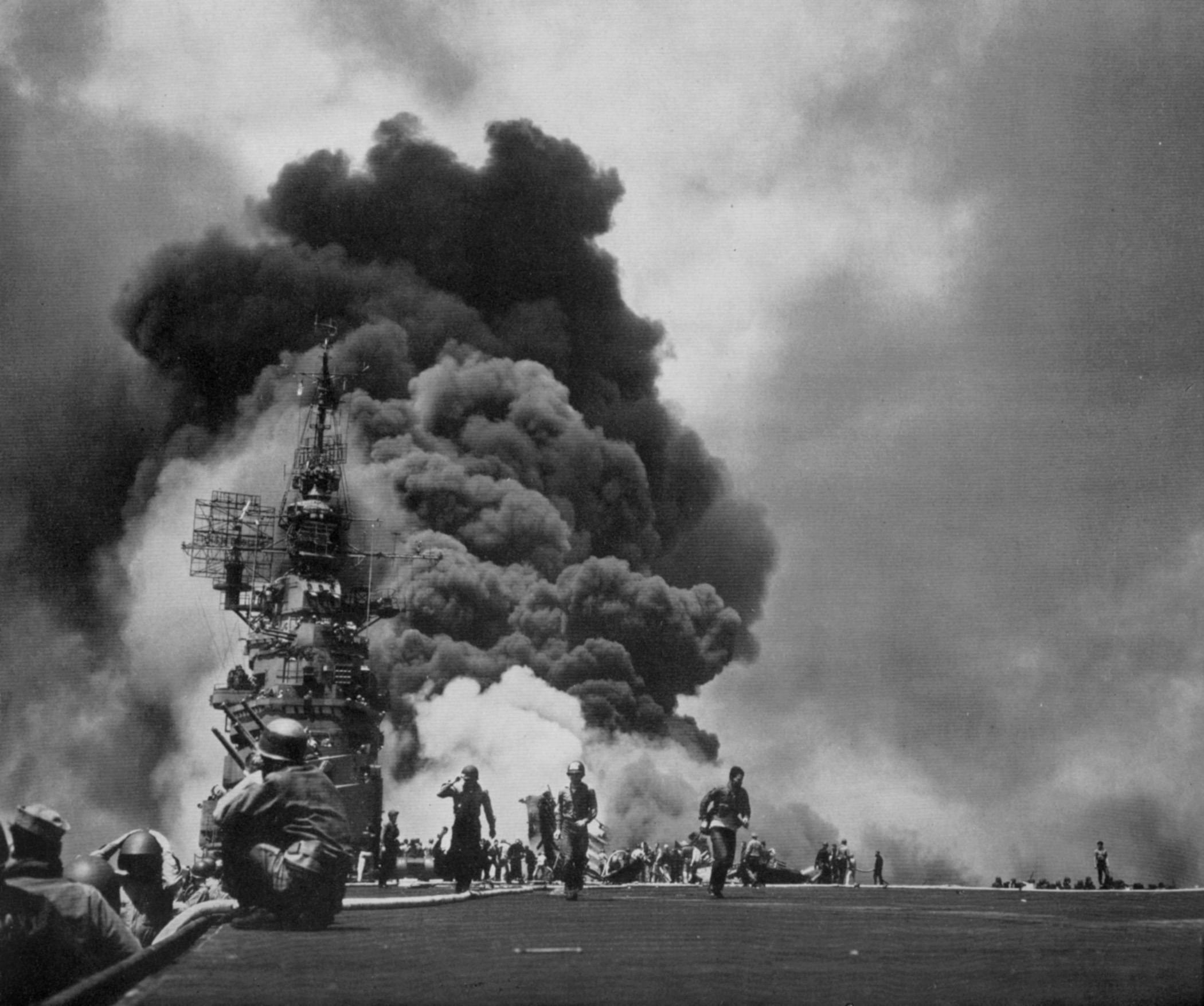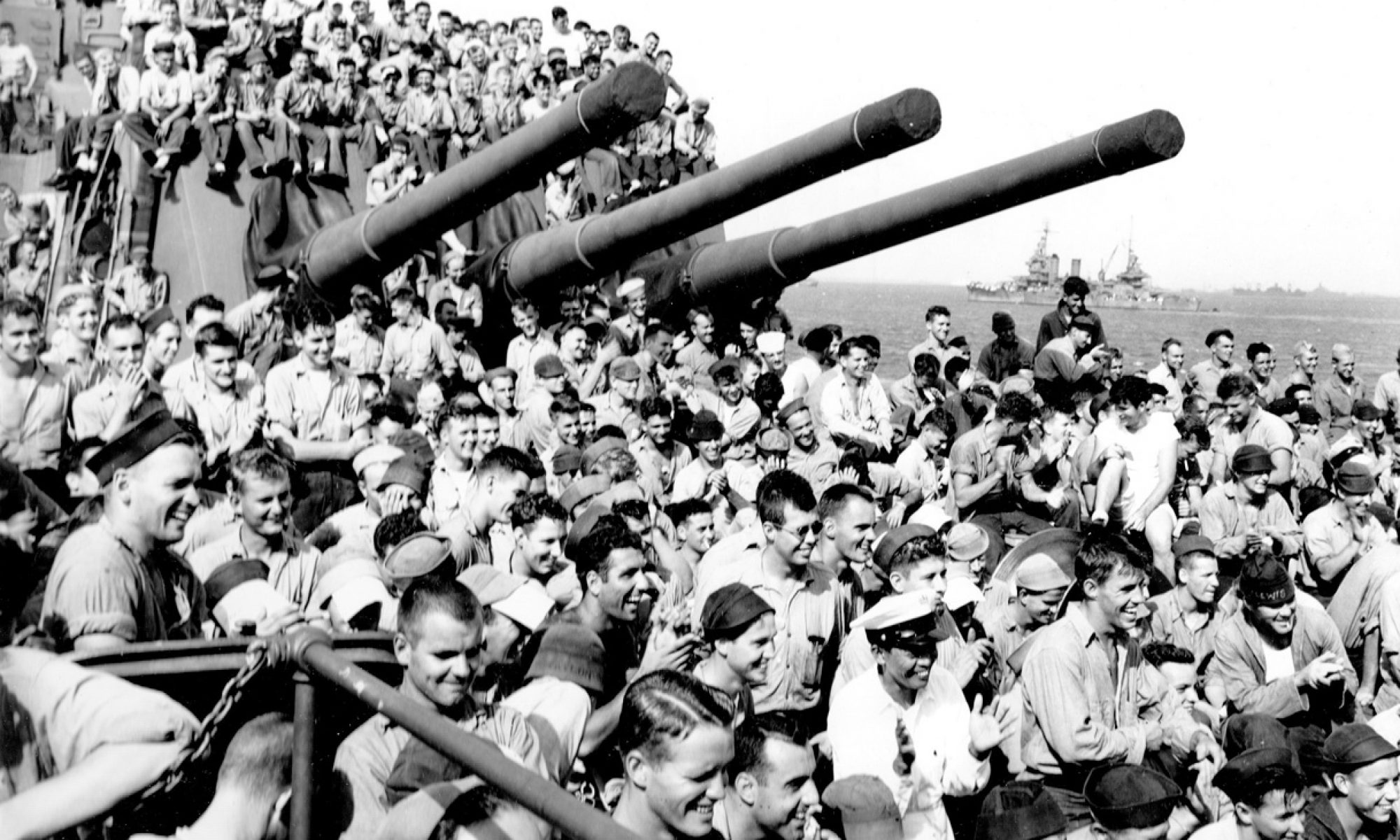8-12-18
I am “polishing up” A Bird’s Eye View (for many reasons). This is an interesting process for me. I wrote this book about the Boston first, relying on Frank Studenski’s amazing diary and research from whatever I could find on the internet. In retrospect, it is a good chronicling of the (Central Pacific) War and Task Force 58 and 38. I am on the Okinawa months, during which the Boston headed stateside and was docked in San Pedro, CA for overhaul and radar / weapons control upgrades.
From a damage – injury – loss of life perspective, CA-69 was a lucky ship. Many other ships were not so lucky. The Japanese tactic of “kamikaze defense” was in place routinely by the latter days of the Philippines Campaigns. There were some incidences during Iwo Jima. However, during the last-ditch desperation of the Okinawa invasion, Japan unleashed wave after wave of savage one-way “floating chrysanthemums” attacks against US ships and landing forces. The numbers of ships and men lost are staggering.


Just a few examples. The Boston was truly a “lucky ship.”
